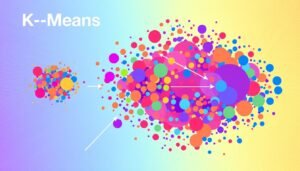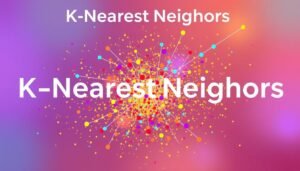Today we will learn how to build a chatbot with python. Have you ever wondered how chatbots work behind the scenes? From simple rule-based systems to advanced large language models, these tools have come a long way. Today, they’re everywhere helping users with customer service, answering questions, and even providing companionship.
Building a chatbot might sound complex, but with Python, it’s easier than you think. Python’s simplicity and powerful libraries make it the perfect choice for creating intelligent conversational agents. Whether you’re a beginner or an experienced developer, this guide will walk you through the process step by step.
We’ll explore essential tools like OpenAI’s technologies and practical examples to help you get started. By the end, you’ll have a solid foundation to create your own chatbot tailored to your needs. Let’s dive in!
Key Takeaways
- Learn the basics of chatbot development using Python.
- Understand the evolution from early systems to modern AI-powered tools.
- Discover essential libraries and tools for building a chatbot.
- Follow a step-by-step guide with practical examples.
- Create a chatbot that meets your specific requirements.
Introduction to Python Chatbot Development
Python has become a go-to language for creating intelligent conversational tools. Its simplicity and extensive libraries make it ideal for both beginners and experienced developers. Whether you’re building a customer service assistant or a personal companion, Python provides the tools to bring your ideas to life.
Benefits of Using Python
Python’s popularity in chatbot development stems from its user-friendly syntax and robust libraries. Tools like ChatGPT and frameworks such as TensorFlow and PyTorch simplify the integration of advanced language models. This allows developers to focus on creating unique features rather than dealing with complex code.
Another key feature is Python’s extensive community support. Platforms like Google and GitHub offer countless resources, tutorials, and pre-built modules. This accelerates the development process and ensures that even beginners can build functional chatbots quickly.
An Overview of Chatbot Applications
Chatbots are transforming industries by automating tasks and improving user experiences. In customer service, they handle inquiries 24/7, reducing wait times. Personal assistants like Google Assistant and ChatGPT help users manage schedules, answer questions, and even provide companionship.
Here’s a quick look at how chatbots are being used across different sectors:
| Industry | Application |
|---|---|
| Healthcare | Appointment scheduling, symptom checking |
| Retail | Product recommendations, order tracking |
| Finance | Account management, fraud detection |
| Education | Tutoring, course recommendations |
With advancements in language models, chatbots are becoming more intuitive and capable. They’re no longer limited to simple responses but can engage in meaningful conversations, making them invaluable tools in today’s digital landscape.
What Are Chatbots?
Conversational tools have evolved significantly over the years. These tools, often powered by AI, are designed to simulate human-like interactions. They play a crucial role in online communications, providing users with instant access to information and support.
Understanding Chatbot Concepts
At their core, these tools are programs that mimic human conversation. Early versions relied on predefined scripts, but modern iterations use advanced language models to generate dynamic responses. This shift has made them more intuitive and capable of handling complex queries.
One of the earliest examples is ELIZA, created in the 1960s. It used simple pattern matching to simulate a therapist. Another notable event was the development of PARRY, which simulated a person with paranoid schizophrenia. These early experiments laid the groundwork for today’s sophisticated systems.
From ELIZA to ChatGPT: A Brief History
The evolution of these tools has been shaped by key milestones in AI research. The Turing test, proposed in 1950, challenged machines to exhibit intelligent behavior indistinguishable from humans. This event inspired decades of innovation.
With the rise of machine learning, tools like OpenAI’s ChatGPT have redefined what’s possible. These systems use advanced language models to generate context-aware responses, offering users seamless access to information. The shift from scripted replies to AI-driven conversation marks a significant leap in technology.
Here’s a quick look at the evolution of these tools:
| Era | Key Development |
|---|---|
| 1960s | ELIZA: First rule-based conversational tool |
| 1970s | PARRY: Simulated human-like behavior |
| 2000s | Rise of machine learning and NLP |
| 2020s | ChatGPT: Advanced AI-driven conversations |
Continual research and updates ensure these tools remain relevant and effective. As technology advances, their capabilities will only grow, making them indispensable in our digital lives.
Essential Tools and Libraries for Python Chatbots
Building a conversational tool requires the right set of tools and libraries. Python’s ecosystem is packed with resources that simplify development and enhance performance. From natural language processing to generating accurate responses, these tools are indispensable for creating intelligent systems.
Key Python Libraries and Frameworks
Python offers a range of libraries tailored for chatbot development. NLTK (Natural Language Toolkit) is a popular choice for processing text and understanding user inputs. It provides tools for tokenization, stemming, and sentiment analysis, making it easier to interpret and respond to queries.
For more advanced tasks, TensorFlow and PyTorch are go-to frameworks. These libraries enable the integration of machine learning models, allowing chatbots to learn from data and improve their responses over time. They’re particularly useful for building systems that require deep learning capabilities.
Another essential tool is ChatBot software, which simplifies the creation of conversational flows. These platforms often come with pre-built templates and integrations, reducing the need for extensive coding. They’re ideal for developers looking to streamline their workflow.
Enhancing Development with Copilot
Developers can also leverage tools like Copilot for code assistance. This AI-powered tool suggests code snippets and automates repetitive tasks, speeding up the development process. It’s particularly helpful for beginners who are still familiarizing themselves with Python’s syntax and libraries.
By using Copilot, developers can focus on designing unique features rather than debugging code. This not only improves efficiency but also ensures that the final product is polished and reliable.
Improving Response Accuracy
Accuracy is critical for any conversational tool. Libraries like Scikit-learn and SpaCy help improve response quality by enabling precise language processing. They’re widely used in the industry for tasks like intent recognition and entity extraction.
Open-source projects like Rasa also play a significant role. This framework allows developers to build customizable chatbots that can handle complex interactions. Its active community ensures regular updates and extensive documentation, making it a reliable choice for professionals.
For more insights into Python libraries, check out this guide on top Python libraries for data science. It highlights essential tools that are equally valuable for chatbot development.
With the right tools and libraries, creating a responsive and intelligent chatbot becomes a manageable task. Whether you’re a beginner or an experienced developer, Python’s ecosystem has everything you need to succeed.
Setting Up Your Python Environment
Getting started with Python for chatbot development begins with setting up your environment. A well-configured workspace ensures smooth coding, debugging, and testing. Let’s walk through the essential steps to prepare your system for chatbot creation.

Installation and IDE Selection
First, download and install the latest version of Python from the official website. Ensure you add Python to your system’s PATH during installation. This step is crucial for running Python scripts from the command line.
Next, choose an Integrated Development Environment (IDE) that suits your needs. Popular options include VS Code and PyCharm. VS Code is lightweight and highly customizable, while PyCharm offers advanced features tailored for Python development. Both support extensions and plugins to enhance functionality.
Once your IDE is set up, install essential packages using pip, Python’s package manager. For chatbot development, libraries like NLTK and TensorFlow are indispensable. Use the following command to install them:
pip install nltk tensorflowConfiguring Your Environment
Proper configuration is key to effective debugging and development. Start by setting up a virtual environment to isolate your project dependencies. This prevents conflicts between different projects and ensures consistency.
Use the following commands to create and activate a virtual environment:
python -m venv myenv
source myenv/bin/activate # On Windows, use myenvScriptsactivateLeverage internet-connected resources like forums and documentation for additional support. Platforms like Stack Overflow and GitHub are invaluable for troubleshooting and finding solutions to common issues.
Language Considerations
Writing clean and readable code is essential for long-term maintenance. Follow Python’s language conventions, such as using meaningful variable names and adding comments where necessary. Tools like gemini can assist in generating code snippets and improving efficiency.
Finally, test your setup by running a simple script. This ensures everything is working as expected before diving into chatbot development. With your environment ready, you’re all set to start building your project!
Step-by-Step Guide to Building Your Chatbot
Creating a conversational tool with Python is an exciting journey that combines planning, coding, and testing. This guide will walk you through the essential steps to design and implement a chatbot that handles user questions effectively.
Designing the Conversation Flow
Start by mapping out the conversation flow. This involves defining how your chatbot will interact with users. Think about the types of questions users might ask and how the chatbot should respond.
For example, if you’re building a customer service chatbot, list common queries like order tracking or product information. Use tools like flowcharts to visualize the conversation paths. This ensures your chatbot can handle a variety of scenarios.
Here’s a simple example of a conversation flow:
- User: “What’s my order status?”
- Chatbot: “Please provide your order number.”
- User: “12345”
- Chatbot: “Your order is out for delivery.”
Implementing NLP with Python
Natural Language Processing (NLP) is the backbone of any intelligent chatbot. Python libraries like NLTK and SpaCy make it easy to process and understand user input.
Begin by installing the necessary libraries:
pip install nltk spacyNext, tokenize the user’s text to break it into manageable parts. This helps the chatbot understand the context of the question. For example:
import nltk
nltk.download('punkt')
from nltk.tokenize import word_tokenize
text = "What’s the weather like today?"
tokens = word_tokenize(text)
print(tokens)This code splits the sentence into individual words, making it easier to analyze. You can also use SpaCy for more advanced tasks like entity recognition and intent classification.
Here’s a table summarizing the key steps in implementing NLP:
| Step | Description |
|---|---|
| Tokenization | Break text into words or phrases |
| Stemming | Reduce words to their root form |
| Entity Recognition | Identify names, dates, and other entities |
| Intent Classification | Determine the user’s goal |
By following these steps, you can create a chatbot that understands and responds to user queries effectively. Modular and reusable code ensures your chatbot can scale and adapt to new requirements.
Integrating Large Language Models
Advanced language models are revolutionizing how we interact with technology. These models, powered by OpenAI and other innovators, enable systems to generate human-like responses and understand complex queries. By integrating them into your program, you can create a more intuitive and engaging experience for users.
Utilizing GPT-Based Technologies
OpenAI’s GPT models, like ChatGPT and GPT-4o, are at the forefront of this transformation. These systems use large language capabilities to process and generate text, making them ideal for conversational tools. For example, they can provide accurate answers to user questions, simulate natural dialogue, and even adapt to different tones and styles.
To incorporate GPT into your program, start by accessing OpenAI’s API. This allows you to integrate pre-trained models into your application with minimal effort. You can then customize the responses to align with your specific use case.
Fine-Tuning for Specific Tasks
While pre-trained models are powerful, fine-tuning them can enhance their performance for specialized tasks. This involves training the model on domain-specific data to improve its accuracy and relevance. For instance, a healthcare chatbot can be fine-tuned to understand medical terminology and provide precise answers.
Here’s a quick guide to fine-tuning:
- Collect and preprocess relevant data.
- Train the model using tools like OpenAI’s fine-tuning API.
- Evaluate the model’s performance and iterate as needed.
Practical examples include customer service bots that handle industry-specific queries and educational tools that adapt to different learning styles. By fine-tuning, you ensure your program meets the unique needs of your audience.
Here’s a comparison of pre-trained vs. fine-tuned models:
| Aspect | Pre-Trained Models | Fine-Tuned Models |
|---|---|---|
| Accuracy | General-purpose | Domain-specific |
| Training Time | Minimal | Moderate |
| Customization | Limited | High |
By leveraging large language models and fine-tuning techniques, you can create a conversational tool that delivers exceptional value. Whether you’re building a customer service assistant or a personal companion, these technologies provide the foundation for success.
Key Features to Enhance Chatbot Performance
To create a truly effective conversational tool, focusing on key features is essential. These features not only improve performance but also ensure a seamless user experience. Let’s explore the capabilities that make these tools stand out.
Context Awareness and Quick Responses
One of the most critical features is context awareness. This capability allows the tool to understand the flow of a conversation and provide relevant responses. For example, if a user asks, “What’s the weather today?” followed by “What about tomorrow?”, the system should recognize the connection between the questions.
Quick responses are equally important. Users expect instant answers, and delays can lead to frustration. By leveraging artificial intelligence, these tools can process queries in real-time, ensuring a smooth interaction.
Managing User Interactions Effectively
Effective management of user interactions is another key factor. Multi-turn conversations, where the tool handles multiple queries in a single session, enhance user satisfaction. This approach mimics human-like dialogue, making the experience more engaging.
For instance, a customer service assistant should be able to guide users through complex processes like troubleshooting or order tracking without losing context. This capability ensures that users feel supported throughout their journey.
Examples from Leading Companies
Several company leaders have successfully implemented these features. For example, Google Assistant excels in context-aware responses, while OpenAI’s ChatGPT leverages advanced artificial intelligence to provide accurate and dynamic answers. These examples highlight the importance of integrating cutting-edge technologies into conversational tools.
The Role of Efficient Search Algorithms
Efficient search algorithms play a crucial role in delivering superior performance. They enable the tool to quickly retrieve relevant information from vast datasets, ensuring accurate responses. This is particularly important for tools handling large volumes of queries, such as customer support systems.
By combining these features, developers can create tools that are not only reliable but also user-friendly. For more insights into how advanced technologies like large language models enhance performance, explore our detailed guide.
Testing and Debugging Your Chatbot
Ensuring your chatbot works flawlessly requires thorough testing and debugging. This step is crucial to identify and fix issues before deployment, ensuring smooth interactions and user satisfaction.
Testing is a critical step for any child project. Start by simulating different user interactions to see how your chatbot responds. For example, test common queries like “What’s my order status?” or “Can you help me reset my password?” This helps uncover potential bugs in the code.

Iterative debugging is another key aspect. Fix one issue at a time and retest to ensure the changes work as expected. Real-user feedback is invaluable here. It provides insights into how users interact with your chatbot and highlights areas for improvement.
“Testing is not just about finding bugs; it’s about ensuring the chatbot meets user expectations.”
Specialized apps and tools can streamline the debugging process. For instance, monitoring tools like Google Analytics track performance metrics, while continuous integration methods ensure updates are tested and deployed seamlessly.
Here’s a table summarizing key testing strategies:
| Strategy | Description |
|---|---|
| Unit Testing | Test individual components of the chatbot. |
| Integration Testing | Check how different components work together. |
| User Simulation | Simulate real-world user interactions. |
| Performance Testing | Ensure the chatbot handles high traffic efficiently. |
This topic covers essential testing strategies to make your chatbot reliable and efficient. By following these steps, you can create a tool that delivers exceptional user experiences.
Deploying Your Chatbot for Real-world Use
Launching your chatbot into the real world is an exciting step that requires careful planning and execution. From choosing the right hosting platform to ensuring data security, every detail matters. Let’s explore how to make your chatbot ready for real-world use.
Hosting Options and Scalability
Selecting the right hosting platform is crucial for your chatbot’s performance. Cloud-based services like AWS, Google Cloud, and Microsoft Azure offer flexibility and scalability. These platforms allow you to handle increased traffic as your user base grows.
On-premise solutions are another option, especially for organizations with strict data control requirements. However, they may require more maintenance and upfront costs. Evaluate your needs to choose the best hosting version for your project.
Scalability ensures your chatbot can handle peak loads without crashing. Implement auto-scaling features to adjust resources dynamically. This ensures smooth interactions even during high-demand periods.
Security and Data Privacy Considerations
Protecting user data is a top priority. Start by encrypting sensitive information during transmission and storage. Use secure protocols like HTTPS to safeguard communication between users and your chatbot.
Regularly update your software to patch vulnerabilities. Implement access controls to restrict who can manage or modify the chatbot. This reduces the risk of unauthorized access.
Compliance with data privacy regulations like GDPR or CCPA is essential. Ensure your chatbot collects only necessary data and provides clear privacy policies. This builds trust with your users.
Real-world Examples
Many companies have successfully deployed chatbots for various tasks. For instance, a retail brand used a cloud-hosted chatbot to handle customer inquiries during holiday sales. The system scaled seamlessly, handling thousands of interactions without issues.
Another example is a healthcare provider that deployed an on-premise chatbot for patient queries. The solution ensured data privacy while improving response times. These examples highlight the importance of choosing the right deployment strategy.
| Hosting Option | Pros | Cons |
|---|---|---|
| Cloud-based | Scalable, cost-effective | Dependent on provider |
| On-premise | Full control, secure | High maintenance |
By focusing on hosting, scalability, and security, you can ensure your chatbot delivers a seamless and secure experience. Whether you’re handling customer support or managing internal tasks, these steps will set your project up for success.
Best Practices for a Great Chatbot User Experience
Creating a chatbot that users love starts with thoughtful design and user-centric features. A seamless and intuitive interface ensures users feel comfortable and engaged. Let’s explore how to design a chatbot that delivers a positive experience.
Designing Friendly and Intuitive Interfaces
An intuitive interface is key to a great user experience. Users should feel like they’re having a natural conversation, not navigating a complex system. Simple design elements like clear prompts and logical flow make interactions smooth.
For example, a chatbot for customer service should guide users step-by-step. If a user asks, “How do I reset my password?” the chatbot should provide clear instructions without unnecessary steps. This reduces frustration and keeps users engaged.
Adding features like voice interaction can enhance usability. Voice-enabled chatbots allow users to speak naturally, making the experience more accessible. Similarly, integrating simple math problem-solving can add value, especially for educational or financial tools.
Cost-Effective Design Strategies
Designing a user-friendly chatbot doesn’t have to be expensive. Start with a clear plan to avoid costly revisions later. Use open-source tools and pre-built templates to save time and resources.
Focus on essential features first. For instance, prioritize conversational flow and response accuracy before adding advanced capabilities. This approach ensures you stay within cost limits while delivering a quality product.
Here’s a table summarizing key design best practices:
| Practice | Benefit |
|---|---|
| Clear Prompts | Reduces user confusion |
| Logical Flow | Enhances conversational ease |
| Voice Interaction | Improves accessibility |
| Cost-Effective Tools | Saves time and resources |
By focusing on these strategies, you can create a chatbot that users find helpful and enjoyable. A well-designed interface not only improves satisfaction but also encourages repeat use.
Future Trends and Chatbots in the Market Today
The future of conversational tools is being shaped by rapid advancements in artificial intelligence and datum handling. As these technologies evolve, they are transforming how we interact with digital systems. Leading models like ChatGPT, Copilot, and Gemini are at the forefront of this revolution, each offering unique capabilities that set them apart.
Emerging Trends in Chatbot Development
One of the most significant trends is the integration of advanced AI models. These systems are becoming more context-aware, enabling them to provide more accurate and relevant responses. For example, ChatGPT’s recent upgrades have improved its ability to handle complex queries, making it a powerful assistant for various tasks.
Another trend is the focus on personalization. Tools like Copilot are leveraging user data to offer tailored suggestions and solutions. This not only enhances user experience but also increases efficiency in completing tasks.
Comparing Industry Leaders
ChatGPT, Copilot, and Gemini each bring unique strengths to the table. ChatGPT excels in generating human-like text, making it ideal for customer service and content creation. Copilot, on the other hand, is designed to assist developers by providing code suggestions and automating repetitive tasks.
Google’s Gemini focuses on integrating with the company’s ecosystem, offering seamless interactions across devices and services. Its ability to process large datasets quickly makes it a valuable tool for businesses.
| Model | Strengths | Use Cases |
|---|---|---|
| ChatGPT | Human-like text generation | Customer service, content creation |
| Copilot | Code assistance, automation | Software development |
| Gemini | Data processing, ecosystem integration | Business operations, device management |
Future Predictions
As AI continues to evolve, we can expect even more sophisticated conversational tools. These systems will likely become more intuitive, capable of understanding nuanced queries and providing detailed content. Improvements in datum handling will also enable them to learn from user interactions, further enhancing their performance.
For businesses, this means more efficient workflows and better customer engagement. For individuals, it promises a more personalized and seamless digital experience. The future of conversational tools is bright, and staying updated on these trends will be key to leveraging their full potential.
Conclusion
Building a chatbot with Python is an achievable goal with the right guidance and tools. This guide has walked you through every step, from setting up your environment to deploying your project. By using the right libraries, testing thoroughly, and prioritizing security, you can create a tool that meets your needs.
The chatbot market is evolving rapidly, offering endless opportunities for innovation. Whether you’re building a customer service assistant or a personal companion, now is the perfect time to experiment and learn. Don’t hesitate to apply the steps discussed and share your projects with others.
With resources like Miguel Rebelo’s insights and the comprehensive nature of this guide, you’re well-equipped to succeed. Embrace the friendly, step-by-step approach and explore the potential of this exciting technology. The future is bright, and your chatbot could be the next big thing in the market this month and beyond.
FAQ
What are the benefits of using Python for chatbot development?
Python is popular for its simplicity and readability, making it ideal for beginners. It also offers a wide range of libraries and frameworks, like TensorFlow and NLTK, which are essential for building intelligent and responsive chatbots.
How do I set up my Python environment for chatbot development?
Start by installing Python from the official website. Choose an Integrated Development Environment (IDE) like PyCharm or VS Code. Then, install necessary libraries such as Flask or ChatterBot using pip.
What are some key Python libraries for building chatbots?
Some essential libraries include NLTK for natural language processing, TensorFlow for machine learning, and Flask for creating web-based interfaces. These tools help in designing and implementing chatbot functionalities.
How can I integrate large language models like GPT into my chatbot?
You can use APIs provided by OpenAI to integrate GPT-based models. Fine-tune the model by training it on specific datasets to improve its performance for particular tasks or industries.
What are the best practices for testing and debugging a chatbot?
Test your chatbot with various user inputs to ensure it handles different scenarios. Use debugging tools to identify and fix errors. Regularly update the chatbot based on user feedback to improve its accuracy and responsiveness.
How do I deploy my chatbot for real-world use?
Choose a hosting platform like AWS or Heroku. Ensure your chatbot is scalable to handle increasing user interactions. Implement security measures to protect user data and maintain privacy.
What are the future trends in chatbot technology?
Chatbots are evolving with advancements in artificial intelligence. Features like voice recognition, multilingual support, and integration with IoT devices are becoming more common. Industry leaders like ChatGPT, Copilot, and Gemini are setting new standards for chatbot capabilities.











